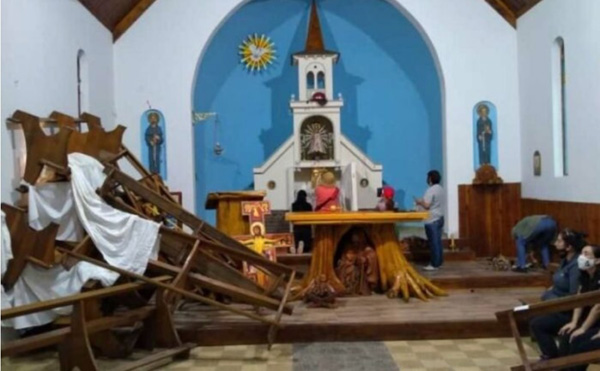
Violations of religious freedom are often described at the national level, as major events tied to authoritarian regimes or regions gripped by conflict. But the reality of persecution and pressure against religious communities is often more fragmented, more local, and more varied than national-level data can show. In this regard, the Violent Incidents Database (VID), developed by the International Institute for Religious Freedom (IIRF), offers a crucial innovation.
By recording incidents not only by country but by state, province, and city, the VID opens the door to subnational analysis, giving researchers and policymakers deeper insight into how religious freedom is violated in specific localities. This narrative report draws from the VID to showcase how granular data is reshaping our understanding of religious freedom threats worldwide.
China: A Nation of Provinces, a Patchwork of Repression
China is frequently portrayed as a monolith in international human rights discourse. However, the VID reveals stark regional differences in how religious groups—especially Christians—are treated across its provinces.
In the province of Anhui, for instance, 640 arrests related to religious freedom violations were recorded, and 556 of these targeted non-Christian groups. In Zhejiang, the pressure appears far more focused on Christians, who experienced nearly all 465 documented arrests. Sichuan saw high levels of non-physical violence (309 incidents) and detentions, while Beijing recorded a surprisingly high number of sentences (16), mostly against lesser-known religious minorities or unidentified groups.
These provincial distinctions show that religious repression in China is not a uniform policy but often depends on local authorities, religious demographics, or political sensitivity. They also signal potential blind spots in global monitoring, which can miss hotspots of repression simply because they lie outside the media spotlight.
Nigeria: Mapping the Epicenter of Lethal Violence
The VID’s incident-level mapping also illuminates which parts of Nigeria are most affected by religiously motivated violence. While Nigeria leads the world in Christian killings overall—with over 8,000 deaths recorded in recent years—the northwestern states bear a disproportionate burden.
Kaduna State, for example, recorded 1,256 killings, followed by Benue (926), Zamfara (861), and Niger State (798). These figures suggest a complex interplay between religion, ethnicity, land use, and insecurity that varies from state to state. They also indicate where humanitarian and security responses should be most urgently focused.
By drilling down into state-level data, the VID enables more targeted policy responses, avoiding the pitfalls of one-size-fits-all solutions that overlook the local dynamics of persecution.
Argentina: Vandalism and Ethnic Tensions in Unexpected Places
Subnational analysis also reveals how religious hostility plays out in relatively unanticipated places, such as Argentina. According to the VID, all recorded attacks in Argentina in 2022 and 2023 were directed against Christian churches, primarily by organized crime, ideological pressure groups, or normal citizens.
One case stands out: during a territorial dispute between Mapuche communities and the government in Villa Mascardi (Río Negro province), two Catholic churches were vandalized, allegedly by ethnic group leaders. This intersection of indigenous rights, ethnic tensions, and religious symbols suggests a more nuanced picture of religious conflict—one that’s harder to detect without subnational data.
These examples underscore why location-specific data matters. By identifying where persecution happens—not just to whom or by whom—the Violent Incidents Database helps scholars, advocates, and policymakers uncover previously obscured patterns. It reveals that persecution is not just a national phenomenon but often a deeply localized one, influenced by local actors, political climates, and societal dynamics. This capacity for micro-level analysis makes the VID a crucial tool not only for academic research but also for humanitarian strategy, security planning, and advocacy.